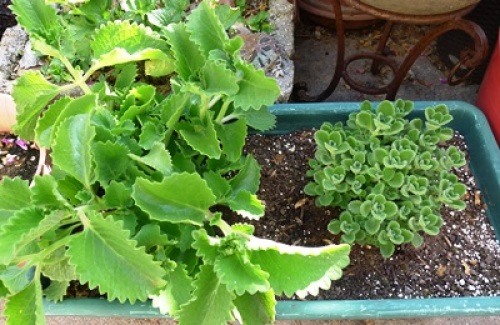
While shopping at the Kingston, N.Y., farmers market in early June, I found a new-to-me herb that I had to bring home. I had never seen Cuban oregano and had to find out more about it.
The folks at the Rexcroft Farm stand told me this easy-to-grow herb is popular in Caribbean cooking and makes a nice substitute in recipes that call for fresh Greek oregano. One plant with smaller leaves was labeled Cuban oregano and the larger-leaved plant was labeled “broad-leaf thyme.”
After doing some research, including The Culinary Herbal, I believe both are Plectranthus amboinicus, just with leaves of different shapes. One type is a spreading plant with large fuzzy leaves; the other features small compact leaves on an upright plant.
Cuban oregano goes by other names, too. It’s been called Puerto Rican oregano, Indian borage, Mexican mint and Spanish thyme. While it’s gathered a few nationalities along the line, it’s believed this versatile herb is a perennial plant native to southern and eastern Africa.
The plants are highly ornamental with thick, succulent leaves that are also highly flavored. The fragrance seems to be a combination of oregano, thyme and sage. Some sources say the leaves can be used as a natural insect repellent because of their aroma. Just squish a few and rub them on exposed skin.
But the best use of fresh Cuban oregano is in Caribbean recipes. Because the leaves are best used fresh, they can be put in a blender with other ingredients for a tangy marinade or chopped for a salsa, sautéed with garlic to flavor a pot of black beans or dipped in a light batter and fried.
I’m growing my plants in a container, but the broad-leaved Cuban oregano would be a beautiful addition to the herb garden, vegetable garden or flower bed. Plants grow in slightly moist soil and can take sun and shade. Because they’re a warm-climate perennial, they’ll need to overwinter indoors.
That should be easy to do. At the end of the season, I’ll take a few stem tip cuttings, poke them in a small container of moist soil, place them in a sunny window and use them fresh for cooking all winter. Then next season, I’ll replant them outside.


















Comments
Log in or create an account to post a comment.
Sign up Log in